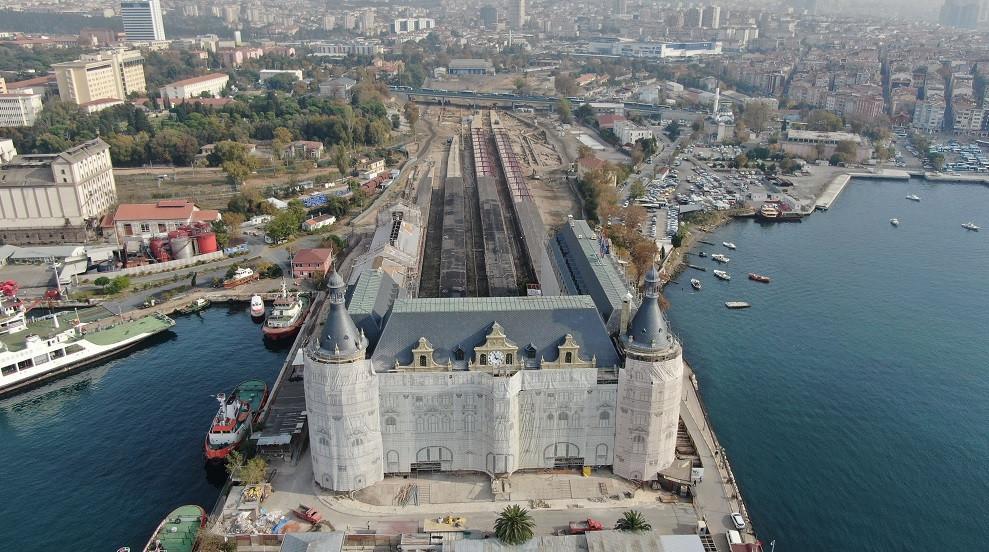
Three years of restoration work on the roof of Istanbul’s iconic railway station has been completed, and its historical clock is keeping good time again.
Haydarpaşa railway building in Istanbul’s Anatolian-side district of Kadıköy was badly damaged in a fire on Nov. 28, 2010.
The General Directorate of Turkish State Railways (TCDD) applied to the Kadıköy Municipality and the Council of Monuments with a restoration project soon after the accident. However, the project was hampered by red tape for six years.
The top of the 111-year-old building was covered by a temporary protective roof, and restoration experts started working on it in 2016.
As part of the project, restoration work on the façade and flank fronts of the historical building will continue for a while. Until restoration work is finished completely, the building will stay under huge decorative blankets.
The clock on the building’s façade between its two towers was also repaired and restored.
The Haydarpaşa station was closed to train services in 2012 due to a large-scale renovation project on the commuter line of Istanbul, and the construction of a high-speed train service connecting the metropolis with the capital Ankara.
Haydarpaşa railway building is an integral part of Turkish cultural heritage as a symbol of mass migration from Anatolian towns and cities to the metropolis in the second half of the 20th century. Many documentaries and movies show domestic migrants from the countryside standing on the frontal area of it and looking at Istanbul’s landmarks Hagia Sophia and the Blue Mosque, which are just opposite Kadıköy on the European-side mouth of the Bosphorus, often in astonishment.
Haydarpaşa station is also famous throughout the Middle East, because it became operational in 1909 as the western terminus of the Baghdad and Hedjaz railways.
The neoclassical structure was designed by German architects Otto Ritter and Helmut Conu.
Recently, Haydarpaşa Railway Station entered the political scene of the country with a tender for the depots and warehouses between the historical building and the nearby port.
The railway authority TCDD had invited bids to lease the idle structures with a total 29,000 square meters around the Haydarpaşa and Sirkeci train stations.
Four companies had initially placed their bids, including a consortium made up of four companies operated by Istanbul Municipality.
The tender commission, however, disqualified the Istanbul Municipality from the tender, citing certain irregularities in the municipality’s application and announced Hazerfen Danışmanlık as the winner.
Istanbul Municipality’s lawyears on Oct. 21 applied to an Istanbul court demanding the cancellation of the tender.
Meanwhile, archaeological excavations revealed important clues to life in ancient times in Kadıköy, then known as “Khalkedon” or the “Land of the Blind.”
Archaeologists have unearthed mass graves, the ruins of a fifth century church and about 6,000 coins, among other items, in a 300,000-square-meter excavation area that starts behind Haydarpaşa Railway Station.